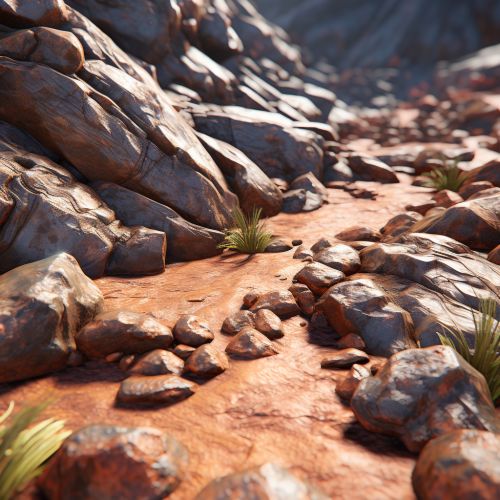Crust (geology)
Introduction
The crust is the outermost shell of a terrestrial planet. In the context of Earth, it is one of the three primary layers of the planet, along with the mantle and the core. The crust is a thin but important zone where dry, hot rock from the deep Earth reacts with the water and oxygen of the surface, making new kinds of minerals and rocks. It is also the zone that has recorded the vast majority of the geological history of our planet.
Composition
The Earth's crust is composed of a variety of rocks. The primary rock types are igneous, sedimentary, and metamorphic. The composition of the crust reflects the rock types that are present, but also the relative abundances of the different rock types. In general, the continental crust is predominantly granitic, while the oceanic crust is basaltic.
Continental Crust
The continental crust is the layer of igneous, sedimentary, and metamorphic rocks that forms the continents and the areas of shallow seabed close to their shores, known as continental shelves. This layer is sometimes called sial because its bulk composition is richer in silicates and aluminium minerals. It is also often referred to as the "granitic layer", due to the large amount of granite rock found within it.
Oceanic Crust
The oceanic crust is the part of Earth's crust that exists under the ocean basins. Oceanic crust is primarily composed of mafic rocks, or sima, which is rich in iron and magnesium. It is thinner than continental crust, or sial, generally less than 10 kilometers thick; however, it is denser, with a mean density of about 3.0 grams per cubic centimeter as opposed to continental crust, which has a density of about 2.7 grams per cubic centimeter.
Formation and Evolution
The Earth's crust was formed through a process called plate tectonics. Plate tectonics is a scientific theory that describes the large-scale motions of Earth's lithosphere. The model builds on the concept of continental drift which was developed during the first few decades of the 20th century. The geoscientific community accepted the theory of plate tectonics after seafloor spreading was validated in the late 1950s and early 1960s.
Crustal Deformation
The Earth's crust is subject to a variety of deformations, from folding and faulting to more complex structural deformations. These deformations are the result of various types of stresses, including compression, tension, and shear. These stresses can be caused by a variety of factors, including tectonic forces, the weight of overlying rocks, and the pressure of fluids within the rocks.
Crustal Recycling
One of the key processes in the dynamics of the Earth's crust is crustal recycling. This is the process by which surface material from the crust is transported to the mantle, mixed and melted, and then returned to the surface as igneous rock. This process is driven by plate tectonics and is a key part of the rock cycle.
See Also


